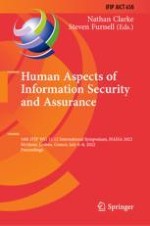2022 | OriginalPaper | Buchkapitel
Understanding Phishing in Mobile Instant Messaging: A Study into User Behaviour Toward Shared Links
verfasst von : Rufai Ahmad, Sotirios Terzis
Erschienen in: Human Aspects of Information Security and Assurance
Aktivieren Sie unsere intelligente Suche, um passende Fachinhalte oder Patente zu finden.
Wählen Sie Textabschnitte aus um mit Künstlicher Intelligenz passenden Patente zu finden. powered by
Markieren Sie Textabschnitte, um KI-gestützt weitere passende Inhalte zu finden. powered by
